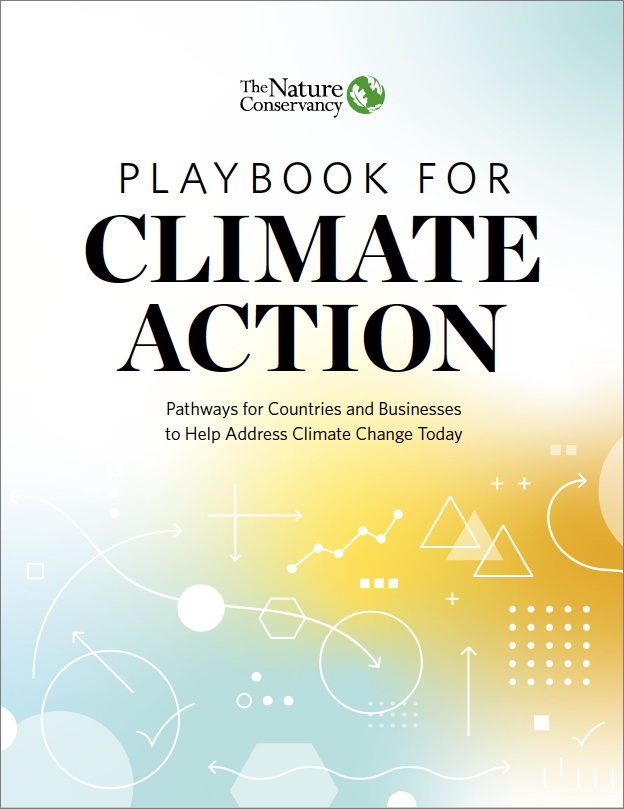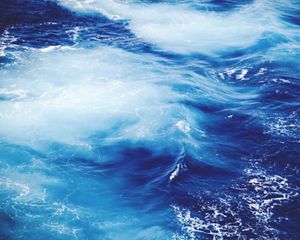The IPCC Ocean and Cryosphere Report: 3 Big Things to Know
What's in the latest UN climate report, and why it matters
Melting ice and rising sea levels are perhaps the most iconic impacts of climate change, but these and other changes happening in the ocean and cryosphere—the parts of the earth’s surface covered in ice—are more complex and much more severe than commonly recognized.
That’s the reason for the latest report from the Intergovernmental Panel on Climate Change (IPCC). The Special Report on the Ocean and the Cryosphere in a Changing Climate (SROCC) emerges from an unprecedented request by national governments concerned about the insufficient data regarding climate effects on the ocean and ice on land and in water.
The ocean has absorbed more than 90 percent of the excess heat in the climate system since 1970, according to the report, but not without consequences. Marine ecosystems have been substantially altered by warming, acidification and deoxygenation. Without immediate steps to mitigate further warming and protect marine and frozen environments, we face a severe negative feedback loop of climate breakdown and degradation of ocean and ice-dependent ecosystems.
The report arrives right in the middle of New York Climate Week, and while the UN Summit has passed, the report will likely influence ongoing conversations among international stakeholders. Here are three key issues highlighted in the report.
 We’ll see food and water security challenges
We’ll see food and water security challenges
Climate impacts often manifest first and most fiercely through water. Rising sea levels can cause saltwater intrusion into both ground and surface freshwater sources—a particular threat for small islands with shallow aquifers. And rapidly melting glaciers mean water shortages for communities in high-alpine areas as well as lower altitudes that depend on glacial-fed rivers.
Water shortages often translate to food shortages, too, and saltwater intrusion threatens crops like taro that many tropical island communities rely on. Warmer, more acidic oceans are also altering marine ecosystems and changing species migration patterns. Habitat loss, combined with overfishing, threatens to further deplete the stocks that feed much of the world.
Better management of these fishing stocks will be crucial. That means changes within that sector, but to see change at scale we need a High Seas Treaty that ensures the 50 percent of our planet covered by the high seas is protected and managed sustainably. Sustainable aquaculture, with its relatively low resource inputs and GHG emissions, can also help address food security issues.
 These challenges affect everyone, but not equally
These challenges affect everyone, but not equally
Nearly two billion people live in low-elevation coastal zones, in high-alpine regions, and in the polar regions—but the whole planet depends on the ocean and the cryosphere. Changes in these systems affect food supplies, shipping routes, telecommunications, national sovereignty and the climate itself on a global scale.
Still, coastal and island communities will bear some of the earliest, most severe impacts—and the rapid rate of development in these regions may exacerbate these impacts. By 2030, urbanization could transform 144,000 square kilometers of coastal zones—an area larger than Greece. Smart development is required to ensure that nature—and 40 million seaside residents—can thrive well into the future.
And the worst climate impacts of all are projected to fall squarely on those that have been historically marginalized. This is true for entire nations—especially the small island nations that are already facing existential threats from sea-level rise–but also for specific population segments within them. In many places women are the primary managers of natural resources, even as they face increased violence in the wake of natural disasters. As climate stress ratchets up, proactive, inclusive planning is required to prevent globally pervasive social disparities from multiplying.
 Investing in nature could be a gamechanger—but we have to act now
Investing in nature could be a gamechanger—but we have to act now
Nature is the first line of defense for many coastal communities. Coral reefs nurture biodiversity and protect coasts from storms—a healthy reef can absorb up to 97 percent of a wave’s force. Mangroves and other coastal wetlands provide similar benefits while also locking billions of tons of carbon in their root systems.
But climate change and other threats have reduced coastal wetlands by 50 percent in the last 100 years and endangered coral reefs, impairing the protective services they provide. Preserving the potential that remains requires urgent action—and that requires funding. Innovative finance mechanisms can drive the ambitious conservation efforts needed to protect more of the ocean by preserving and managing marine resources.
One example of such initiatives is The Nature Conservancy’s Blue Bonds for conservation, which leverages philanthropy, impact investment and debt restructuring to support coastal and island nations as they drive a more sustainable ocean economy. In addition to finance strategies like Blue Bonds, innovative mechanisms like insurance for coral reefs can help protect and restore vital habitats that shelter coastal areas.
The clock is ticking. Given the degree of certain warming and sea-level rise that is already in motion, it’s imperative we take every possible measure to help communities adapt to the threats they face today.
Resources
-

Playbook for Climate Action
Five ways to spark global, multisector change for the planet right now
DOWNLOAD
Global Insights
Check out our latest thinking and real-world solutions to some of the most complex challenges facing people and the planet today.



